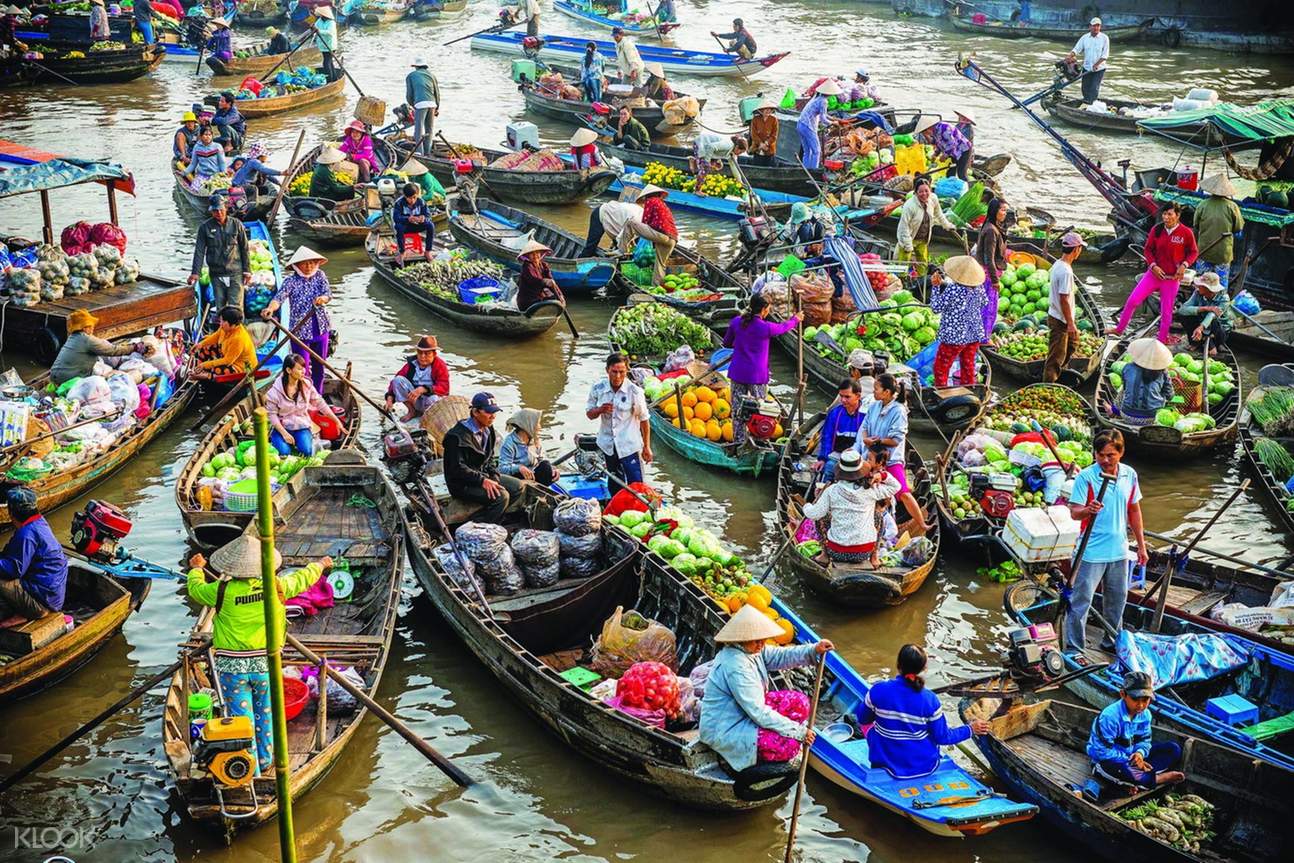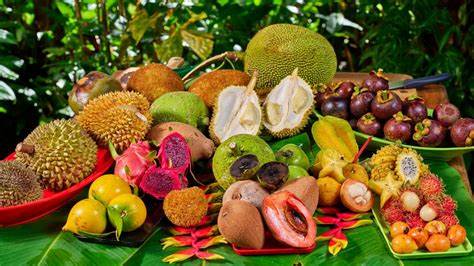1. Introduction to Floating Markets Vietnam
Floating markets Vietnam represent intriguing windows into the nation’s history and way of life. Originating centuries ago, the water-based markets developed in areas like the Mekong Delta, where rivers and canals provided the main transport routes. Nowadays, they are a mixture of traditional trade and tourist spots: local sellers sell fruits, vegetables, and native products right from their boats, while tourists enjoy boat rides through the lively waters, taking in the scenery. The origins of water markets are to be found in Vietnam, where transportation on the great network of rivers was a necessity, especially down south. Where there were no roads following the more traditional mold, there were rivers that became the highway and where it was natural for the marketplaces to form on the water.
Floating Markets
2. Historical Significance of Floating Markets Vietnam
Floating markets Vietnam have formed the backbone of the local economies in Vietnam, especially in the southern region of the Mekong Delta, for several centuries. Indeed, the Mekong Delta is part of a larger area commonly referred to as the “rice bowl of Vietnam.” Several rivers and canals cross this area, so the movement of goods is best done through water transportation. These markets played a significant role in agricultural trade in Vietnam, as farmers and traders transported their produce by river for sale. Over time, they became not only places of commerce but also meeting points for people where news and information would be disseminated.3. Popular Floating Markets in the Mekong Delta
The floating markets Vietnam are concentrated in the Mekong Delta, a region known for its intricate network of waterways. Some of the most popular floating markets include:- Cai Rang Floating Market
- Cai Be Floating Market
- Phong Dien Floating Market
Cai Rang Floating Market: The Largest Floating Market in Vietnam
Generally speaking, when mentioning floating markets Vietnam, people would immediately refer to Cai Rang Floating Market. Located near the city of Can Tho, Cai Rang is indeed the biggest and most popular floating market in the Mekong Delta area. It gets underway very early in the morning when hundreds of boats would join together to exchange fresh produce, household items, and more.
Mainly, Cai Rang features wholesale, with the vendors predominantly selling enormous levels of merchandise to other, much smaller traders who redistribute them across the area. To any tourist, it is an opportunity to witness up close the thriving trade and even taste some of the fresh fruits and local culinary delights made right on the boats.
Cai Be Floating Market: A Blend of Tradition and Modernity
Another famous floating market Vietnam is the Cai Be Floating Market, which is located in the Tien Giang Province. It has declined in recent years due to modern road transportation that surrounds it, but it still remains one of the vital stops for tourists. Cai Be operates more like a wholesale market, with traders selling fruits like durians, mangoes, and longans in big quantities.
They can also visit villages nearby where local crafts are to be seen in close proximity to the making of rice paper and candy. This helps through further cultural experience.
Phong Dien Floating Market: A Lesser-Known Gem
Smaller and more languid, the Phong Dien Floating Market is an ideal choice for travelers who would avoid the mobs. Lying about 20 kilometers from Can Tho, Phong Dien provides the best site to see the real charm of floating markets Vietnam.
Unlike Cai Rang, which is rather touristy and commercial, Phong Dien is a lot less touristy and filled with interaction between tourists and local sellers of fresh produce, handicrafts, and traditional snacks.
4. Best Time to Visit Vietnam’s Floating Markets
The best time for visiting floating markets Vietnam is early in the morning; that would mean around 5:00 to 7:00 AM. This is just about the perfect time when it gets bustling and active, and one may get a feel of the exciting trading atmosphere. Past 9:00 AM, many vendors are already packing up, so it’s important to ensure that you’re going to arrive early.
It is most comfortable during the dry season, which falls between November and April, given that the weather is excellent and calm in the waters. However, the rainy season can provide a less touristy view and serenity if looked at from another perspective.
5. What to Expect at a Floating Market Vietnam
At a floating market Vietnam, you’ll find vendors selling a variety of goods, including:- Fresh fruits and vegetables
- Seafood and meats
- Household items
- Local handicrafts
- Traditional snacks and street food
6. Local Products and Food at Floating markets Vietnam
Floating markets Vietnam are well-known for their local products, mainly fresh fruits, such as bananas, pineapples, and jackfruit. You will find some strange regional specialties, like coconut candy, rice noodles, and fish sauce. Most of them cook food on the spot, right on their boats, so that you can enjoy a freshly cooked meal while you float along the river.

If you’re more of an adventurous eater, make sure not to miss the local street food such as Banh Xeo and Vietnamese Pancakes, and hu tieu-a very, very popular noodle dish. These floating kitchens offer a real taste of the Mekong Delta’s culinary heritage.
7. Cultural Insights: The Role of Floating Markets in Vietnam’s Economy
Floating markets Vietnam have not only been places where trading is done, but a vital cultural institution of Vietnam since time immemorial. The floating markets Vietnam help link up the rural farmers with buyers from larger cities and contribute a great deal to the local economy.
While the contemporary systems of transportation have reduced dependence on water routes, floating markets Vietnam continue to contribute significantly to the local economy, especially in the Mekong Delta region, and have become major tourist attractions earning revenue for the region through tourism.
